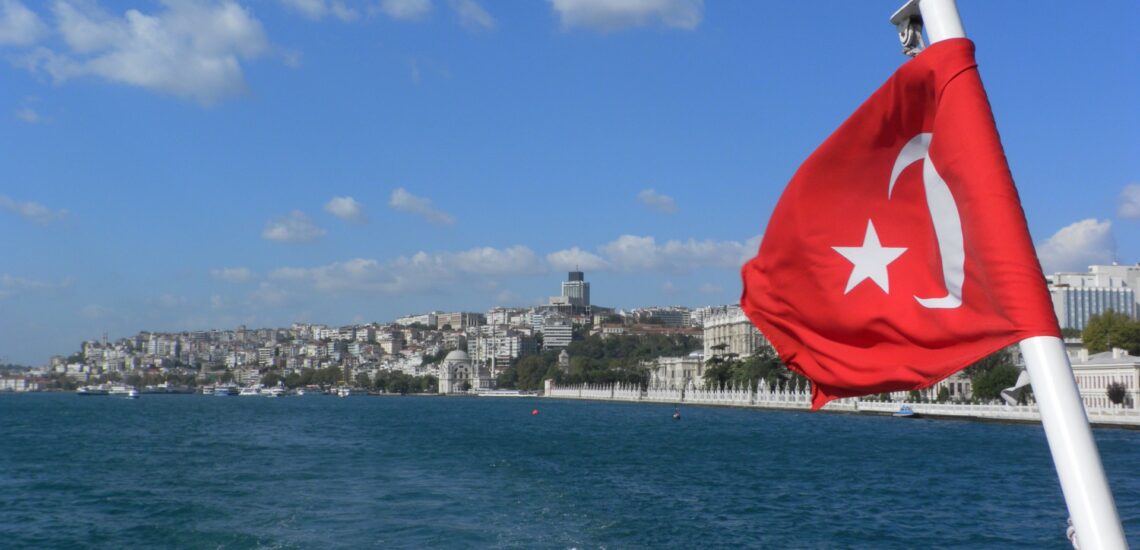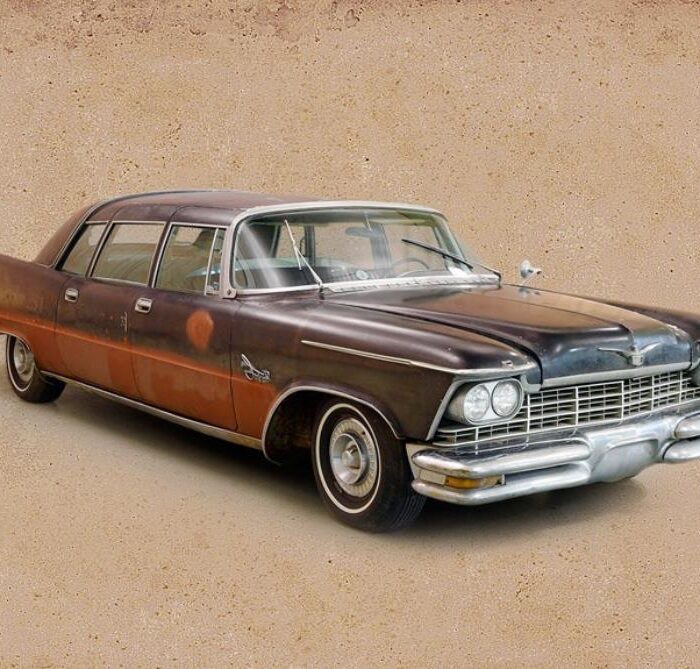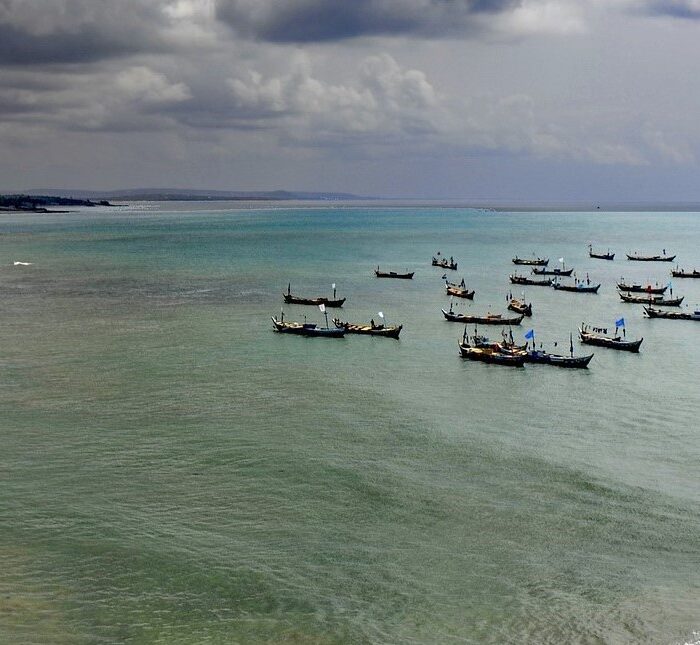Quick facts about Turkey:
- Location: Turkey is a transcontinental country, spanning both Eastern Europe and Western Asia.
- Capital: Ankara.
- Official Language: Turkish.
- Currency: Turkish Lira (TRY).
- Population: Around 83 million.
- Size: Covering an area of about 783,356 square kilometers, Turkey features a varied terrain and rich historical heritage.
Fact 1: Istanbul is located on two continents at once
Istanbul, Turkey’s largest city, is a fascinating metropolis that spans two continents: Europe and Asia. The city is divided by the Bosporus Strait, a narrow waterway that has played a pivotal role in Istanbul’s history.
Geographically, the European side of Istanbul covers around 5,343 square kilometers, while the Asian side encompasses approximately 2,730 square kilometers. The Bosporus, with a width ranging from 700 meters to 3,000 meters, serves as the natural boundary between these two continents.
Historically, Istanbul, formerly known as Byzantium and later Constantinople, has been a strategically significant city for centuries. It served as the capital of the Byzantine Empire and later the Ottoman Empire. The iconic Hagia Sophia, initially a cathedral, then a mosque, and now a museum, stands as a symbol of the city’s diverse history.
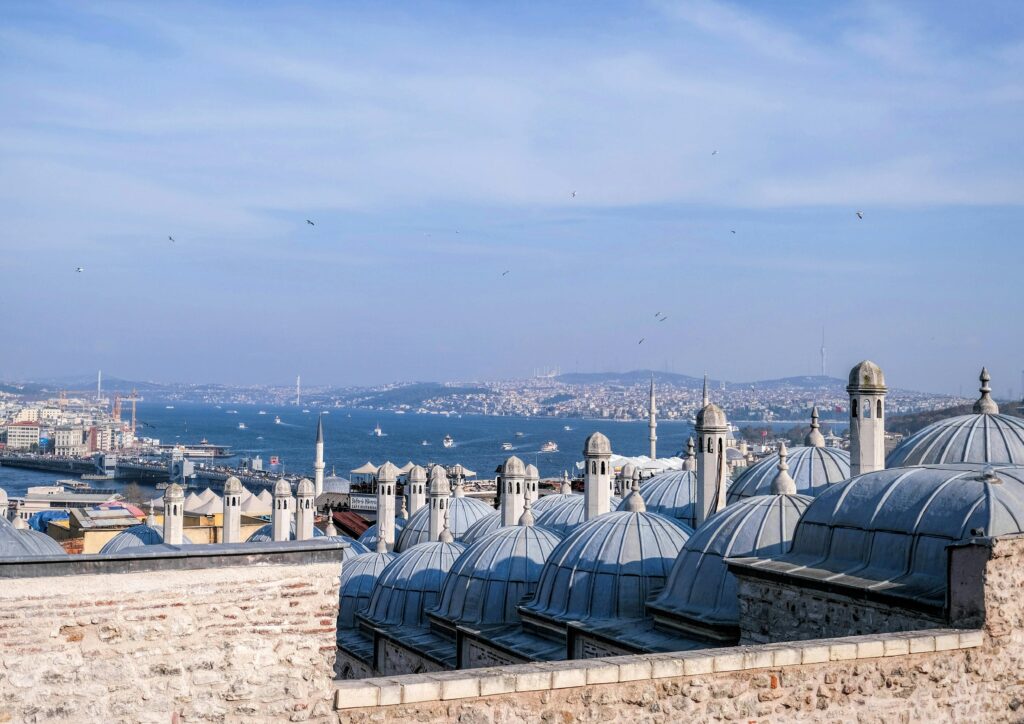
Fact 2: There were many ancient civilizations on the territory of Turkey
Turkey has a rich history that spans millennia, hosting numerous ancient civilizations. Here are a few key examples:
- Hittites: Flourishing around 1600–1200 BCE in Anatolia, the Hittite Empire was one of the major powers of the ancient world. Hattusa, their capital, is now Hattusha and is a UNESCO World Heritage site.
- Phrygians: Occupying central and western Anatolia in the 8th to 7th centuries BCE, the Phrygians are known for the legendary King Midas. The ancient city of Gordion was their capital.
- Lydians: Flourishing from the 7th to 6th centuries BCE, the Lydians were known for their wealth, attributed in part to their use of precious metals like gold and silver. Sardis was a major Lydian city.
- Urartu: In the eastern part of Anatolia, Urartu (9th–6th centuries BCE) left behind impressive fortresses, like Van Castle, and advanced irrigation systems.
- Greek and Roman Empires: Parts of Turkey were integral to both the Greek and Roman civilizations. Ephesus, Troy, and Aphrodisias are notable archaeological sites from this era.
- Byzantine Empire: With Byzantium (later Constantinople, now Istanbul) as its capital, the Byzantine Empire had a lasting influence on the region for over a millennium.
- Seljuk and Ottoman Empires: The Seljuks and later the Ottomans played crucial roles in shaping Turkey’s history from the 11th century onwards, with the Ottoman Empire becoming a powerful force in the 14th century and lasting until the early 20th century.
Fact 3: A famous tourist route is named after one of them
Lycian Trail, or the Lycian Way, is a long-distance hiking trail in southwestern Turkey. It stretches approximately 540 kilometers (335 miles) along the coast of Lycia, an ancient region that existed during the Iron Age and Classical Antiquity.
The Lycians were an indigenous people of Anatolia, and their civilization thrived from the 15th century BCE to the 546 BCE when the Persian Empire conquered the region. The Lycian Trail takes its name from this ancient civilization, and it offers hikers a remarkable journey through diverse landscapes, including coastal paths, mountainous terrain, and picturesque villages.
Along the trail, hikers can explore numerous historical sites, including ancient Lycian cities, tombs, and amphitheaters. The route provides a unique blend of natural beauty and archaeological wonders, making it a popular destination for those seeking both adventure and a glimpse into Turkey’s rich history.
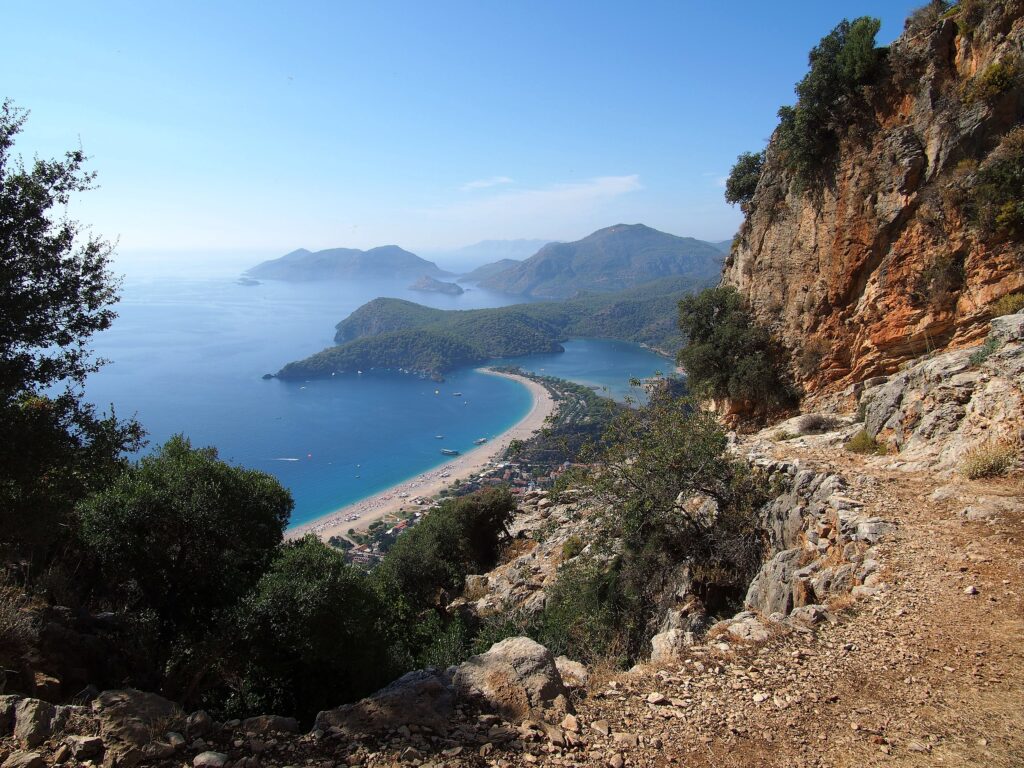
Fact 4: Some of the oldest settlements have also been found in Turkey
Turkey is home to some of the world’s oldest settlements, providing invaluable insights into human history and early civilizations. Here are a couple of notable examples:
- Göbekli Tepe: Located in southeastern Turkey, Göbekli Tepe is an archaeological site dating back to around 9600 BCE, making it one of the oldest known temple complexes in the world. The site consists of massive stone pillars arranged in circles, suggesting advanced architectural and symbolic capabilities in a pre-agricultural society.
- Çatalhöyük: Situated in central Anatolia, Çatalhöyük is a Neolithic settlement that existed around 7500 BCE. It is considered one of the world’s oldest-known urban centers. The site reveals a complex society with densely packed mudbrick houses, elaborate wall paintings, and evidence of early agriculture.
Fact 5: One of the most visited and famous places in Turkey is Cappadocia
Cappadocia is renowned for its unique and captivating landscape, often referred to as an “open-air museum” due to its rich historical and geological significance. Here are some key features:
- Fairy Chimneys and Unique Rock Formations: Cappadocia’s surreal landscape is characterized by fairy chimneys, cone-shaped rock formations formed by volcanic activity. These natural wonders, along with other distinctive rock formations, create a mesmerizing and otherworldly environment.
- Göreme Open-Air Museum: Göreme is a town in Cappadocia that houses the Göreme Open-Air Museum, a UNESCO World Heritage site. The museum features a cluster of rock-cut churches and monasteries with beautifully preserved frescoes dating back to the 10th to 12th centuries. These churches, carved into the soft volcanic tuff, served as places of worship for early Christians.
- Cave Dwellings and Underground Cities: Cappadocia’s landscape is dotted with cave dwellings and entire underground cities carved into the soft rock. These structures were used as homes, storage rooms, and hiding places by ancient inhabitants. Derinkuyu and Kaymaklı are notable underground cities in the region.
- Hot Air Balloon Rides: The region is also famous for its hot air balloon rides, providing a breathtaking and unique perspective of the Cappadocian landscape, especially during sunrise. The balloons float above the fairy chimneys and offer panoramic views of the region’s geological wonders.
Note: If you plan to visit the country, find out if you need an International Driver’s License in Turkey to drive.

Fact 6: Turks love tea and drink it always and everywhere
Tea is an integral part of Turkish culture, enjoyed throughout the day in various settings. It symbolizes hospitality, with hosts offering tea to guests as a gesture of warmth. Turkish tea is typically strong and served in small tulip-shaped glasses. Tea gardens, known as çay houses, are popular places for socializing, contributing to a vibrant atmosphere. In urban areas, street vendors roam with mobile tea carts, offering tea to passersby. Beyond its consumption, tea fosters connections, with shared cups often sparking conversations and creating a sense of camaraderie among people.
Fact 7: Santa Claus was born on Turkish territory
The legendary figure associated with Santa Claus, St. Nicholas, was born in the ancient Lycian city of Patara, which is located in modern-day Turkey. St. Nicholas, a Christian bishop, lived during the 4th century CE. His reputation for generosity and gift-giving, especially to the needy, contributed to the development of the modern Santa Claus figure.
St. Nicholas became the patron saint of children, sailors, and various cities, with tales of his charitable acts spreading far and wide. Over the centuries, the stories evolved, and various cultures adapted the figure of St. Nicholas into the familiar Santa Claus we know today.

Fact 8: Home of the kebab Turkey
Turkey is renowned as the birthplace of the kebab, a culinary tradition that has become popular worldwide. The term encompasses a diverse range of grilled or roasted meat dishes. Turkish kebabs, deeply rooted in history, reflect the influence of the Ottoman Empire. They often feature meats like lamb, beef, chicken, and fish, marinated with a blend of spices, yogurt, and herbs. The cooking techniques involve grilling on open flames or vertical rotisseries, preserving the natural flavors and juices of the meat. Regional specialties add further variety to the world of Turkish kebabs. This culinary heritage has left a lasting impact, with kebabs being enjoyed globally and influencing various international cuisines.
Fact 9: Turkey has many nationalities and ethnic groups
Turkey is characterized by a diverse population that includes various ethnicities and nationalities. While the majority of the population identifies as Turks, there are also several ethnic groups and minorities. The concept of Turkish identity is primarily linked to the Turkish people, but it’s essential to recognize the cultural and historical diversity within the country.
Apart from Turks, Turkey is home to various ethnic groups, including Kurds, Arabs, Circassians, Laz, Armenians, Greeks, and others. These groups contribute to the country’s cultural mosaic, each with its unique language, traditions, and heritage.
The Turkish people, who are primarily of Turkic origin, have historical ties to Central Asia. The Turkic migration from Central Asia to Anatolia occurred over centuries, particularly during the Seljuk and Ottoman periods. The Turkic language family forms the basis of the Turkish language spoken in modern-day Turkey.
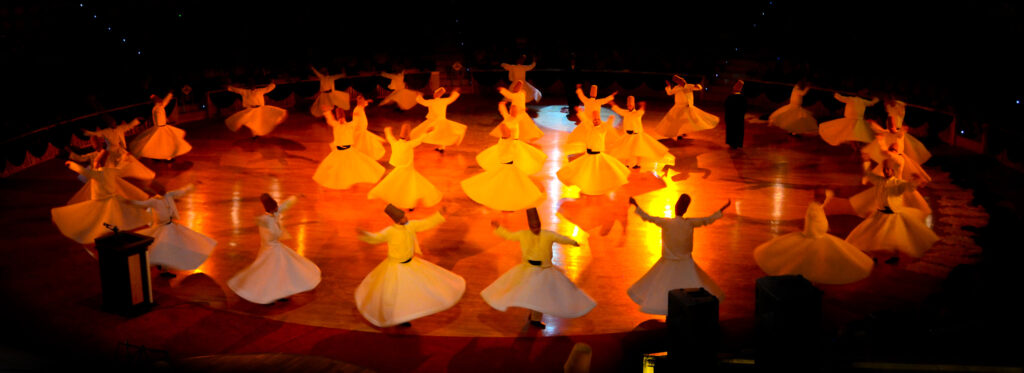
Fact 10: The Devil’s Eye is the best-selling souvenir in Turkey
“Evil Eye” or “Nazar Boncugu” is a common and well-known symbol in Turkish culture. The “Evil Eye” is believed to protect against the “evil eye curse” and is often incorporated into various forms of jewelry, keychains, ornaments, and other decorative items. The belief in the protective power of the Evil Eye is deeply rooted in Turkish folklore and is prevalent in many Mediterranean and Middle Eastern cultures.

Published March 03, 2024 • 8m to read

